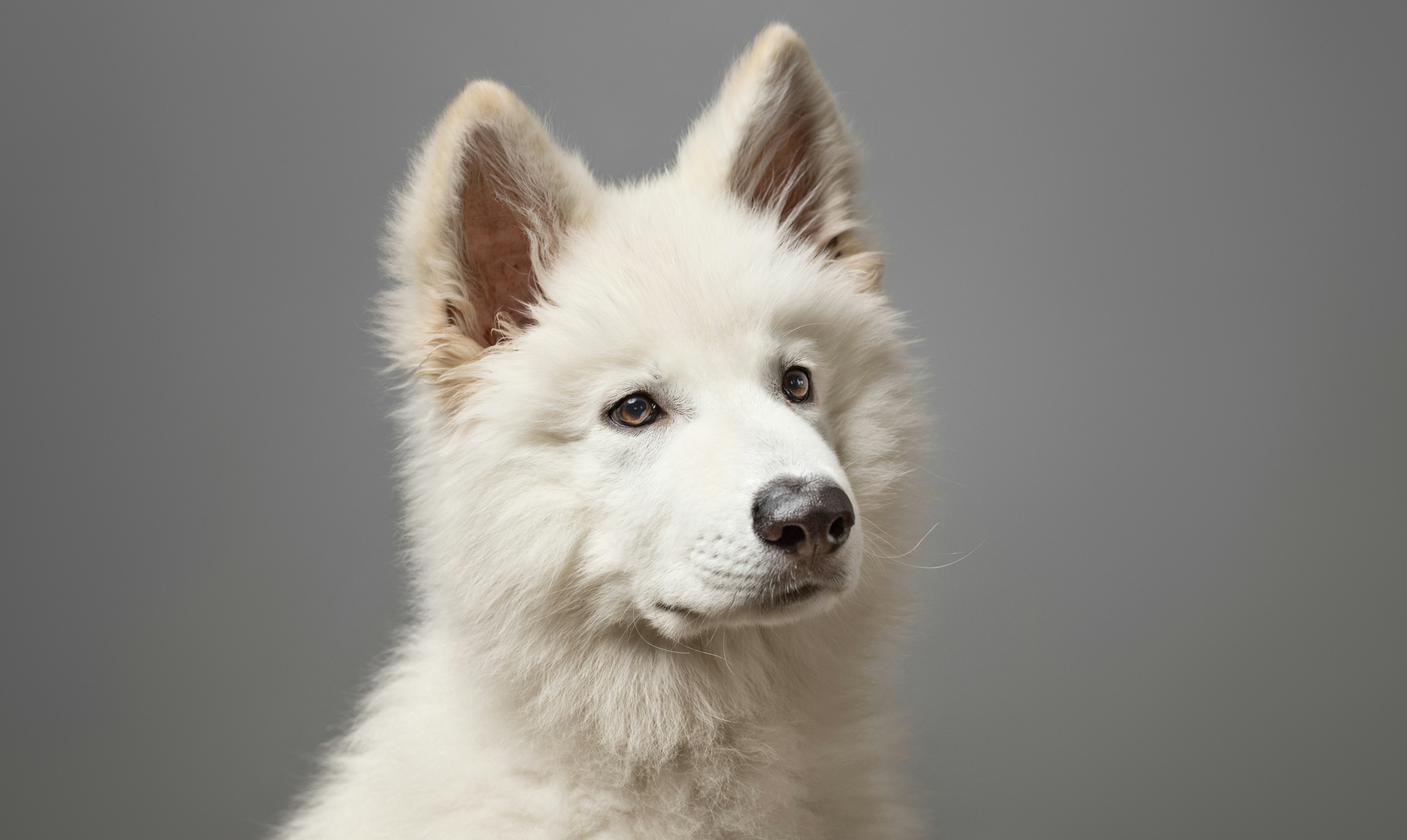
Cats aren’t the only pets with long, luxurious whiskers. Well, maybe dog whiskers aren’t as lithe, but these fur babies still share this trait. But why do dogs have whiskers anyway?
Whiskers are specialized hairs that work as touch receptors, according to Brian Collins, a veterinarian at the Cornell Riney Canine Health Center. “When their whiskers brush up against things, that sends a signal that there's something there,” Collins tells Inverse. That sense of touch helps them get around, especially because their eyesight close up isn’t sharp.
Collins hypothesizes that whiskers evolved to help creatures survive by finding food and finding their way around. “It would have provided some sort of survival benefit,” he says. “If you're able to get around better in your environment, you're going to survive better, and you're going to find food better.”
Whiskers can detect touch and convey emotion, says Nancy Welborn, a veterinarian and associate professor of community practice at the Louisiana State University School of Veterinary Medicine. These hairs, Welborn says, convey information to merkel cells in the whisker follicle, which are connected to nerve endings.
“When the whisker is moved, that movement is picked up by the merkel cell and that sends information to the brain,” she says. That information may be something like, Wow, this sure is a tight space or I think there’s some food right under my chin. Detecting the environment through movement is particularly important to puppies right after birth while their eyes are sealed shut for 10 to 14 days. The sensations they provide help guide the puppies to nurse.
Whiskers can also tell you something about how your dog feels. Welborn says that a relaxed dog’s whiskers will be flat against their face while a stressed dog’s whiskers “stand upright or outward so they’re more pronounced.” If they’re stressed, they might be positioning their whiskers to maximize the information they can glean about their environment, sticking them out to detect every possible motion.
All dog breeds, Welborn says, have whiskers. Whiskers sprout above their eyes, on their chin, and around their nose on their muzzle. Their color and texture depends on fur color. “And if you have a curly haired dog, they kind of curl a little bit,” she says.
It’s also normal for dogs to shed whiskers; they grow back. However, Collins advises pet parents should avoid trimming or shaving whiskers. “Even if they don't need them for their survival, it's part of who they are, and it's part of how they perceive their environment,” he says. Our pampered pooches don’t need whiskers to survive, but these conduits still relay important information about their surroundings. “For most dogs in a home environment, they're not really in danger,” he says, “but it sort of takes away part of how they interact with their environment.”







